Cupping Therapy
Introduction
Cupping Therapy is an antique form of alternative medicine in which a therapist puts certain cups on your skin for a few minutes to create suction. This suction is thought to improve the flow of energy in the body and promote healing. A regional suction is created on the skin within the application of heated cups. Its practice mainly occurs in Asia but also in Eastern Europe, the middle east, and Latin America.
Cupping has been characterized as pseudoscience and its practice as quackery People get it for many purposes, including to help with pain, inflammation, blood flow, relaxation, and well-being, and as a type of deep tissue massage.
What is cupping therapy?
Cupping therapy is one of the oldest and most considerably effective methods of releasing toxins from body tissue and organs. It is also known as vacuum cupping, hijama cupping, horn therapy, etc. It is a method in which the therapist puts special cups on the skin to create suction. This causes the tissue under the cup to be drawn up and swell causing an increase in the blood flow to the affected area. Enhanced blood flow beneath the cups draws impurities and toxins out from the nearby tissues and organs toward the surface for elimination.
Despite the considerable ailments for which practitioners claim cupping therapy is useful, there is insufficient evidence it has any health benefits, and there are some chances of harm, especially from wet cupping and fire cupping. Bruising and skin discoloration are among the unfavorable effects of cupping and are sometimes mistaken for child abuse. In rare instances, the presence of these marks on children has shown legal action against parents who had their children receive cupping therapy.
Cupping improves blood circulation to the area where the cups are placed. This might relieve muscle tension, which could also improve overall blood flow and promote cell repair. It could also help to form new connective tissues and create new blood vessels in the tissue. People use cupping to complement their consideration for a host of symptoms and conditions.
The cups may be made up of:
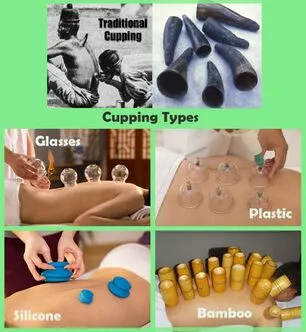
- Glass/fire glass cups
- Bamboo / wooden cups
- Silicone / facial cups
- Horn/suction cups
- Plastic / hijama cups
Cupping therapy might be trendy now, but it is not unique. It dates back to old Egyptian, Chinese, and Middle Eastern cultures. One of the most aged medical textbooks in the world, the Ebers Papyrus, defines how the ancient Egyptians used cupping therapy in 1,550 B.C.
Types of cupping therapy
There are different methods of cupping, including:
- Dry
- Wet
During both methods of cupping, your therapist would put a flammable substance such as alcohol, herbs, or paper in a cup and set it on fire. As the fire goes out, they would put the cup upside down on your skin. As the air inside the cup cools, it begins a vacuum. This causes your skin to rise and flush as your blood vessels expand. The cup is mostly left in place for up to 3 minutes. An additional current version of cupping uses a rubber pump instead of fire to create a vacuum inside the cup. A Few times therapists utilize silicone cups, which they might move from place to place on your skin for a massage-like effect.
Wet cupping constructs a little suction by leaving a cup in place for about 3 minutes. The therapist then removes the cup and utilizes a small scalpel to make light, small cuts on your skin. Next, they are doing a second suction to draw out a small quantity of blood. You might get 3 to 5 cups in your first session. Otherwise, you might just try once to see how it goes. It is rare to get more than 5 to 7 cups, the British Cupping Society notes. Afterward, you will also get an antibiotic ointment and bandage to prevent infection. Your skin must look normal again within 10 days. Cupping therapy promoters believe that wet cupping removes harmful substances and/or toxins from the body to encourage healing. But that is not proven. Some individuals would also get “needle cupping,” during which the therapist first inserts acupuncture needles and then puts cups over them.
What Equipment is Required in Cupping therapy?
Cups can be fabricated from a variety of different materials, However, disposable cups are preferred, as non-disposable cups require advanced sterilization and disinfection procedures before they are reusable. The cup size depends on the location where it is being utilized. A blunt surgical blade is commonly used to create superficial lacerations in Al-hijamah wet cupping. An auto-lancet needle is more commonly used in the two-step classic wet cupping method
Cupping may also involve the use of:
- acupuncture needles
- moxibustion, or the burning of mugwort leaves
- magnets
- laser therapy
- electrical stimulation
- water
- herbs
Subsets of cupping include:
- facial cupping
- sports cupping
- orthopedic cupping
- aquatic cupping
Who Can Perform Cupping Therapy?
Cupping is an easy, very secure modality to practice. It is completely unregulated, and therefore it can be performed by anyone like Acupuncturists, Physical therapists, Chiropractors, Massage therapists, and Medical doctors. If it is practiced within a regulated health practice, it must attach to the contraindications and legislation indicated within the scope of practice.
If the therapist or practitioner does not belong to a college or association or is not sure, the therapy cannot be performed until an adequate response is found. If the therapist or practitioner has not had training in a modality or is not taking extra training to treat certain conditions, then precautions must be taken.
What conditions can cupping treat?
Cupping has been used to treat a broad variety of conditions. It may also be particularly effective at easing conditions that create muscle aches and pains. Since the cups may also be applied to major acupressure points, the practice is possibly effective at treating digestive issues, skin issues, and other conditions commonly treated with acupressure therapy. Cupping therapy is indicated for both benefit patients and those suffering from ailments.
Cupping therapy may assist with the following conditions, among others:
Australian and Chinese researchers studied 135 studies on cupping. They concluded that cupping therapy might be effective when people also get other treatments, like acupuncture or medications for various diseases and conditions, such as:
- Herpes Zoster
- Acne
- Facial paralysis
- Cervical spondylosis
But those researchers reported many of the studies they reviewed could have been biased and that better studies are needed.
The British Cupping Society declares that cupping therapy is used to treat:
- Blood disorders such as anemia and hemophilia
- Rheumatic diseases such as arthritis and fibromyalgia
- Fertility and gynecological disorders
- skin problems such as eczema and acne
- High blood pressure
- migraines
- Anxiety and depression
- Bronchial congestion caused by allergies and asthma
- varicose veins
Cupping practitioners attempt to use cupping therapy for a wide array of medical conditions including fevers, chronic low back pain, poor appetite, indigestion, atopic dermatitis, psoriasis, stroke rehabilitation, nasal congestion, infertility, and menstrual period cramping.
Not a single theory lives to explain the whole effects of cupping, but some theories include:
- altering pain signal processing
- using counter-irritation, or pain to reduce pain
- stimulating high blood circulation through the release of nitric oxide
- stimulating the immune system within artificial local inflammation
- improving the level of immune products, such as interferon and tumor necrotizing factor
- expanding the flow of lymph in the lymphatic system
- decreasing uric acid and/or both types of cholesterol
- varying the molecular structure and function of hemoglobin (Hb)
Despite considerable theories, more additional quality research is needed to confirm the effects of cupping as well as the mechanisms by which they may or may not support healing.
Methods of cupping
- Modern suction devices are periodically utilized instead of traditional cups. Your practitioner, your medical conditions, and your preferences will help determine which method is used.
- While details vary between practitioners, societies, and cultures, the method consists of drawing tissue into a cup placed on the targeted area by creating a partial vacuum – either by the heating and subsequent cooling of the air in the cup or through a mechanical pump. The cup is normally left in place for somewhere between five and fifteen minutes.
- Cupping therapy varieties can also be classified using four distinct methods of categorization. The first system of categorization is associated with “technical types” including dry, wet, massage, and flash cupping therapy. The second categorization connects to “the power of suction-related types” consisting of light, medium, and strong cupping therapy. The third categorization connects to “the form of suction-related types” including fire, manual suction, and electrical suction cupping therapy. The fourth categorization connects to “materials inside cups” including herbal products, water, ozone, moxa, needle, and magnetic cupping therapy.
- Different categories of cupping were developed later. The fifth connects to the area treated including: facial, abdominal, female, male, and/or orthopedic cupping therapy. The sixth connects to “further cupping types” that include sports and aquatic cupping.
Dry cupping
Dry cupping involves the application of a heated cup on the skin of the back, chest, abdomen, and/or buttocks. The cooling of the air is then thought to produce a suction effect. Bamboo and different materials are sometimes used as alternatives to glass cups. Your provider heats the interior of each cup — generally with an alcohol-soaked cotton ball that is set aflame. The heat transmits oxygen out of the cup, creating a vacuum. Some providers use a suction instrument to remove air from cups. Once placed on your skin, the vacuum force drags the skin up into the cup.
Fire cupping
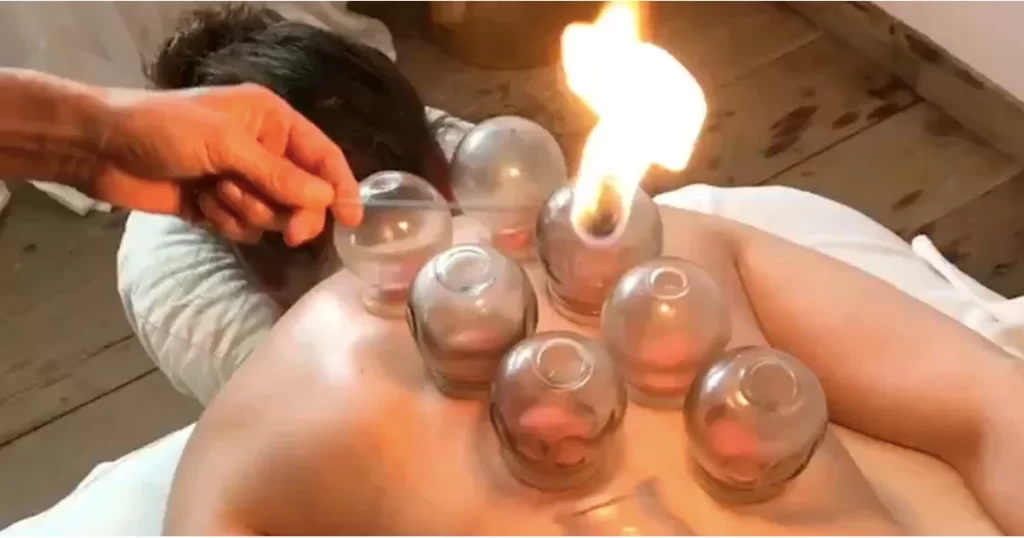
Fire cupping incriminates soaking a cotton ball in almost pure alcohol. The cotton is clamped by a pair of forceps and lit through a match or lighter, and, in one motion, placed into the cup and quickly removed, while the cup is placed on the skin. The fire heats the air in the cup which, after cooling decreases in volume creating a negative pressure inside the cup. The cup is then quickly placed onto the body and/or the negative pressure “sucks” the skin up. Massage oil might also be applied to create a better seal as well as permit the cups to slide over muscle groups (e.g. trapezius, latissimus dorsi, erectors, etc.) in an act called “gliding cupping” or “sliding cupping”. Dark circles can appear where the cups were placed because of the capillary break just under the skin. There are documented cases of burns induced by fire cupping.
Wet cupping
Wet cupping is even known as Hijama (Arabic: حجامة lit. “sucking”) and/or medicinal bleeding, where blood is drawn by regional suction from a small skin incision. Your provider utilizes a needle to lightly puncture your skin before, and sometimes after, cupping. Toxins escape the body through puncture wounds during the cupping procedure. The first documented usages are found in the Islamic hadith, sayings attributed to or explaining the actions of the Islamic prophet Muhammad. Hadith from Muhammad al Bukhari, Muslim ibn al hajjaj nishapuri, and Ahmad ibn Hanbal support its recommendation and use by Muhammad. As a result, wet cupping has stayed a popular remedy practiced in many parts of the Muslim world.
In Finland, wet cupping has been done slightly since the 15th century, and it is done traditionally in saunas. The cupping cups were made of cattle horns with a valve mechanism in them to create a partial vacuum by sucking the air out. Cupping is still practiced in Finland as a region of relaxing and healthy regimens.
Oil cupping / Sliding cupping
It’s a technique where massage oils are applied, cups are attached to the body and then slide across an area.
Flash cupping / Empty cupping
It involves quick repeated application of cups, with the tiniest retention. It decreases local congestion and stimulates circulation over a broader area.
Traditional Chinese medicine
In Chinese, cupping is also known as “pulling-up jars”. According to Traditional Chinese medicine (TCM), cupping is done to dispel stagnation (stagnant blood and lymph), thereby enhancing qi flow, to treat respiratory diseases such as the common cold, pneumonia, and bronchitis. Cupping likewise is used on the back, neck, shoulder, and other musculoskeletal conditions. Its proponents claim it has other applications as well. Cupping is not recommended, in Traditional Chinese medicine, over skin ulcers or to the abdominal or sacral regions of pregnant women.
How does the cupping and suction part work?
People are still exploring how cupping eases pain and disease symptoms. There is not a lot of research on the therapy. Suction from cupping draws liquid into the treated area. This suction force expands and breaks open small blood vessels (capillaries) beneath the skin. Your body manages the cupping area like an injury. It conveys more blood to the area to provoke the natural healing process. A few individuals theorize that cupping clears the pores and releases toxins.
The cup is often heated with fire manipulating alcohol, herbs, or paper that is placed directly into the cup. The fire source is removed, and the heated cup is placed within the open side directly onto your skin. When the hot cup is placed into your skin, the air inside the cup cools and creates a vacuum that draws the skin and muscle up into the cup. Your skin might also turn red as the blood vessels respond to the change in pressure. A Few modern cupping practitioners have shifted to using rubber pumps to create suction versus more conventional heat methods.
Procedure and Use Of Cupping In Physiotherapy
A Physiotherapist utilizes a rubber pump to produce a vacuum and this causes the skin to rise. The blood vessels will expand and are used to create a massage effect.
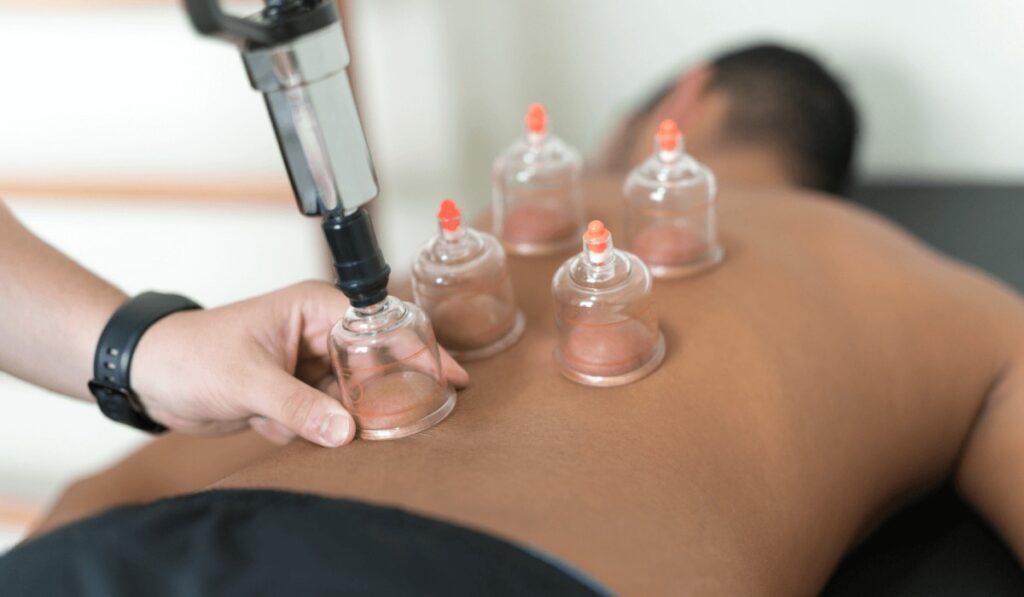
Preparing for your cupping appointment
Cupping is a long-practiced treatment that may assist ease the symptoms of both temporary and chronic health conditions. If you decide to try cupping, use it as a complement to your current doctor visits, not a substitute
Here are some items to consider before beginning cupping therapy:
- What conditions does the cupping practitioner specialize in feasting?
- Which method of cupping does the practitioner use?
- Is the facility clean? Does the practitioner implement safety measurements?
- Does the practitioner have any certifications?
- Do you have a condition that may profit from cupping?
Before starting any alternative therapy, let your doctor know that you’re planning to incorporate it into your treatment plan.
Pre and post-procedure of cupping
- Proper counseling should be done to the patient about the procedure and post-treatment marks or scars.
- Take consent if required.
- The surface should be cleaned or disinfected before cupping.
- Use the new sterile disposable needle or surgical blade and disposable cups for wet cupping.
- Check for damages, wounds, and raised local temperature.
- Check for sensitive skin.
- After the method, apply moisturizer or antiseptic cream to prevent any possible infection.
- After hijama cupping, the dressing should be done.
The sites are selected according to the treated disease. The cups are frequently placed on areas with abundant muscles. The back is the most typical application site, followed by the chest, abdomen, buttocks, and legs. Other areas, such as the face, might also be treated by cupping. According to research analyses, it is recommended that cups should be on the skin for no more than 5 to 10 minutes. The residual marks left from cupping disappear in 1 to 10 days.
What should I expect during a cupping treatment?
Cupping is sometimes performed with acupuncture treatments. For best outcomes, you might also want to fast or eat only light meals 2 to 3 hours before your cupping session.
During a cupping treatment, you may expect the following:
- Your practitioner will ask you what symptoms you have been experiencing, likely carrying a detailed health history if this is your first time visiting them.
- The practitioner would place cups on your skin.
- You will feel a sucking sensation and pressure as the cups are suctioned.
- The practitioner can use heat or suction alone to place the cups.
- Depending on the type of cupping, the practitioner might leave you to relax for a few minutes before they return to extract the cups.
- Your skin may also turn red and show light bruising after your session.
Where will my practitioner place the cups?
Cups are most often applied to the:
- back
- chest
- abdomen
- buttocks
- legs
Normally, the back is the most common area for cups to be used. If you are receiving facial or cosmetic cupping, cups will be placed on your face.
How long will my session last?
- With dry cupping, the cup is kept in position for a set time, usually between 5 and 10 minutes.
- With wet or bleeding cupping, the practitioner makes a slight incision to draw blood before purposely pulling stagnant blood out of the incision with the suction of the cup.
- Running cupping usually concerns the application of oil before the use of suction. Then the cups are slowly moved around the area, satisfying a massage-like effect. Depending on the kind of service you are receiving, your session could last anywhere from 10 minutes to an hour or more additional.
- When it arrives to flash cupping, the cups are quickly suctioned and then released, usually in the identical generalized area of the body. This is normally a 5 to 10-minute procedure as well.
Cupping after-care
Your therapist will give you an additional detailed aftercare guide at the end of your session. But here’s the general gist:
- Hydrate, hydrate, hydrate! Give your lymphatic system the excess fluids it requires to flush your body of the toxins
- Don’t shower immediately after cupping.
- Keep the areas that were treated protected and warm.
- Avoid alcohol.
- You may also feel fatigued or experience flu-like symptoms the next day. This is normal. It is your body processing and removing the toxins that were released during your cupping session. Take it comfortably, get extra rest, and practice good self-care. Your body will thank you!
Advantages or Benefits of cupping therapy
The effects of cupping therapy include:
- promoting the skin’s blood flow
- changing the skin’s biomechanical properties
- increasing pain thresholds
- improving local anaerobic (without oxygen) metabolism
- reducing inflammation
- Facilitates the healing process and/or strengthens the immune system
- Used for relaxation, well-being, and/or deep tissue massage
- It is a secure, non-invasive, and inexpensive treatment.
Another effect
- Skin: Improved metabolism in skin tissue, more proper functioning of sebaceous and sweat glands, improved healing, and improved skin resistance.
- Muscles: Stimulates blood flow and lymphatic drainage.
- Joints: Raised blood flow and secretion of synovial fluid.
- Digestive system: Increased peristalsis and/or secretion of digestive fluids, better digestion, and excretion.
- Blood: Improved blood circulation, and improved functioning of Red blood cells and White blood cells.
- Nervous System: Stimulates sensory nerves of the skin, Improves the autonomic nervous system.
Side Effects of Cupping therapy
Cupping is fairly safe, as long as you go to a skilled health professional. But you could also have these side effects in the area where the cups touch your skin:
- Mild discomfort
- Burns
- Bruises
- Skin infection
If the cups and equipment evolve contaminated with blood and are not sterilized correctly between patients, bloodborne diseases such as hepatitis B and C can be spread. There are not many side effects associated with cupping. The side effects you may experience normally occur during your treatment or immediately after, such as:
- circular marks where the cups have been
- discoloration
- dizziness
You might also feel lightheaded or dizzy during your treatment. Rarely, you can also experience sweating or nausea. After treatment, the skin almost the rim of the cup may become irritated and marked in a circular pattern. You could also have pain at incision sites after your session.
Other risks include:
- scarring of the skin
- hematoma (bruising)
If you experience any of these issues, confer with your practitioner. They may suggest remedies or steps you can take before your session to evade any discomfort.
What are the Contraindications of cupping therapy?
- Absolute contraindications to cupping therapy consist of cancer, organ failure, hemophilia, or a similar blood disorder, and having a pacemaker. Cupping therapy is not advised for geriatric patients, pediatric patients, or women who are pregnant or are currently menstruating. Those with high serum cholesterol are at a more increased risk of developing cardiovascular ailments with cupping.
- Contraindications possess sites with deep vein thrombosis, an open wound, or a bone fracture. Cupping should not be done instantly over nerves, arteries, veins, varicose veins, skin lesions, body orifices, lymph nodes, eyes, or areas with skin inflammation. Cupping done over excoriated, oozing, or infected areas may also cause an increase in D-dimer levels.
- Those suffering from particular chronic diseases, like cardiovascular disease, those being treated with anticoagulants, or those experiencing an acute infection should normally avoid cupping therapy.
Does cupping remove toxins?
According to the analysis mentioned above, cupping can also remove toxins by stimulating the immune response, both locally and systemically. It could also eliminate uric acid, a natural waste product from the digestion of certain foods. The uric acid buildup could lead to high levels of acidity in the blood and urine.
Cupping can also have a positive effect on the lymphatic system, which is partly accountable for eliminating your body’s waste. When the flow of lymph is interrupted, it may cause fluid buildup and prevent the body from properly destroying toxins. Lymphatic drainage massage is one resolution to this problem. Similarly, cupping may also help increase the flow of lymph and/or prevent fluid buildup.
The proof of cupping’s capacity to remove toxins is promising, but more research is needed to confirm it.
What about those red marks?
It is important to comprehend that the red circular marks left behind by the cups are not scrapes. They very rarely hurt. Bruises are caused by influence trauma that breaks capillaries in the injured area. But there is no condensation or impact trauma when cupping is done correctly. Cupping does the contrary. Instead of compressing or pushing your skin and muscles, it lifts or stretches your skin and tissues.
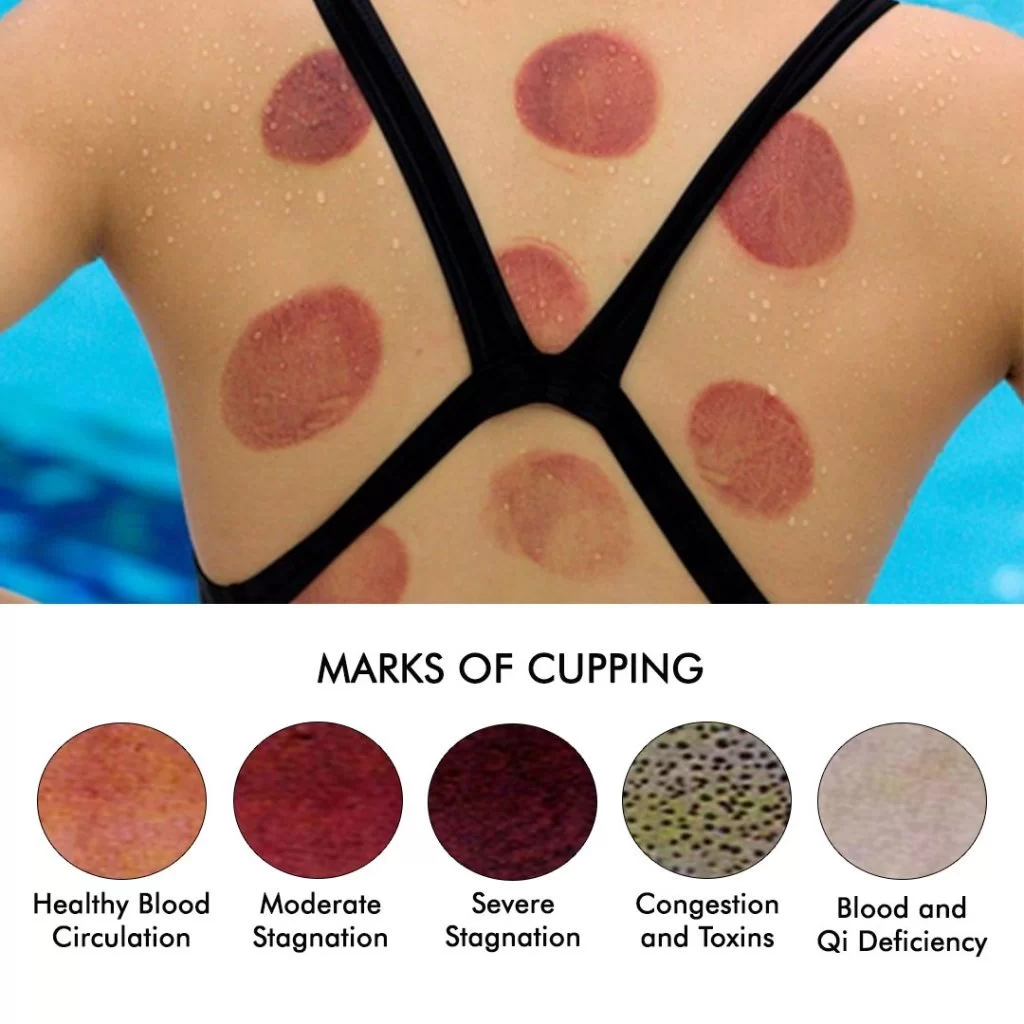
The red marks are the outcomes of the blood being pulled into that area. The darker the mark, the more stagnant fluids (toxins, blood, and lymph) were dredged up during treatment. The marks last anywhere from a rare hour to several days. The more frequently you receive cupping for the same issue, the lighter the marks will be.
What are the possible risks or complications of cupping?
Cupping therapy is normally safe, with adverse events being infrequent. Those that are registered range from mild to moderate in severity. Cupping is a fairly low-risk therapy. Still, you may experience scar formation, burns, bullae formation, abscesses, skin infection, pruritus, anemia, and panniculitis.
Nonpreventable unfavorable events include the Koebner phenomenon, headache, dizziness, tiredness, vasovagal syncope, nausea, and insomnia. Infection, vasovagal syncope, and/or scarring are seen more often in wet cupping. Normal effects of dry cupping include local erythema and ecchymosis. Understandably, there is an improved risk of burns if the fire is used for suction.
Can Cupping Promote Healing and Pain Relief?
In current years, celebrities like Gwyneth Paltrow and Jennifer Aniston have shown up to star-studded affairs with mysterious circular, red marks on their backs, telltale signs of the ancient practice of cupping. While this optional healing technique is not recognized in the U.S., it dates back thousands of years to Egyptian, Chinese, Middle Eastern, and Eastern European cultures. And it is been earning attention in the U.S. as celebrities and professional athletes have become vocal devotees of the practice’s relaxing, therapeutic properties.
- Cupping concerns applying heated glass or plastic cups to explicit areas of the skin in a way that creates suction to restore the flow of blood and energy or qi and stimulate healing. The cups are kept even or gently moved across the skin in a gliding fashion to loosen muscles, improve circulation and draw out toxins that linger in the tissues. It is a form of deep tissue therapy, presents Kathleen Greenough, a doctor of acupuncture and Chinese medicine at the Pacific College of Oriental Medicine in New York City. “By making a vacuum inside the cup, using heat or suction, it draws the skin and layers of muscle into the cup, which permits [the technique] to smash up muscle knots and bruising that’s not visible. It consistently spreads pores and circulation in the area and clears any obstructions like lactic acid and build-up of toxins from the environment.”
- In other words, with the suction effect, “we are creating a controlled injury that kick starts the healing process,” explains Dr. Charles Kim, an acupuncturist and/or assistant professor of rehabilitation medicine and anesthesiology at the NYU School of Medicine, Rusk Rehabilitation, who sometimes uses cupping for pain management in his practice. “It is a counter-irritant that creates more healing to the area we are addressing.” During a session, the procedure can also cause mild discomfort, equivalent to having a massage on a painful area, but not pain.
- Cupping is extremely beneficial for relief from back pain, headaches, menstrual cramps, and other painful conditions, experts say. In a 2011 study from China, after individuals with fibromyalgia had daily cupping sessions for 15 days, their pain symptoms and the number of tender points had reduced considerably, effects that lasted for two additional weeks. More new, a 2013 study from India found that when people with osteoarthritis of the knee had 11 cupping treatments over 15 days, they gained considerable relief of pain, swelling, and/or stiffness outcomes that were equivalent to taking 650 milligrams of acetaminophen three times a day, according to the researchers.
- The technique is also used to treat respiratory diseases (such as asthma, bronchitis, and chronic cough), gastrointestinal conditions (like constipation), and high blood pressure, notes Kylie Study, a licensed acupuncturist and Traditional Chinese Medicine practitioner at the Beaumont Health System in Troy, Michigan. “It may also be used as an adjunctive treatment [constantly with acupuncture or massage] or as a stand-alone treatment.” Cupping is not for everyone, though. Greenough says, People who have thin, light skin or a bleeding disorder, or who are taking blood thinners or corticosteroids, should not do it because of the risk of skin damage. In anyone, areas, where there are open wounds, sores, or infections, need to be detoured.
Individuals often think the cupping marks that linger are bruises, but that is not true, Greenough says: “If it were a bruise, the mark would be uniform, but with cupping, there is only a mark where toxins or bruising beneath the surface was drawn out.” The marks usually go out within a week, and with consistent treatment, the marks generally get lighter over time.
Things to keep in mind
Cupping therapy is not recommended for everyone. Don’t use cupping if you use blood-thinning medication. Also, avoid cupping if you have:
- a sunburn
- a wound
- a skin ulcer
- experienced recent trauma
- an internal organ disorder
- thinning skin
Cupping should not be done on:
- veins
- arteries
- nerves
- skin inflammation or lesions
- body orifices
- eyes
- lymph nodes
- varicose veins
Most medical experts do not have training or a background in complementary and alternative medicine (CAM). Still, it is a good idea to let your doctor understand if you choose to add cupping to your treatment plan.
Continue with frequent doctor visits related to your condition to get the best of both worlds. Cupping should not replace medical care but can complement it.
Clinical Significance
- The strongest evidence for cupping therapy’s advantage is for the treatment of pain, especially musculoskeletal pain, migraine, or tension headache. In one examination, there was a 66% reduction in mean headache rigor following wet cupping treatment. The numeral of headaches per month for these patients also decreased by 12.6 days. Cupping therapy has been shown to nourish pain relief in lumbar sprain, scapulohumeral periarthritis, brachialgia paraesthetica nocturna, arthritis, and neuralgia pain.
- Dry cupping is commonly used for musculoskeletal discomfort and muscular tension. Dry cupping has demonstrated benefits to patients suffering from chronic back pain in both behavioral variables of pain and physiological parameters when involved in the lumbar or cervical regions. For chronic back pain therapy, five sessions of cupping therapy, with 3 to 4-day intervals between sessions, and with cups applied to the skin for around 8 minutes achieved significant effects in reducing overall pain.
- Generally, dry cupping offered the most benefit in generalized pain disorders, while wet cupping showed the most benefit in inflammatory-related pain conditions, such as herpes zoster infection (shingles).
- There have been researches done that have shown the benefits of cupping therapy in further pain management. In a German study, traditional wet cupping was shown to be useful in feasting carpal tunnel syndrome. Wet cupping was also shown to treat thalassemia and/or autoimmune diseases effectively. Cupping therapy was demonstrated to be sufficient against cough, acne, and dyspnea.
As noted in the Introduction, to improve patient outcomes, clinicians should understand that cupping therapy is not a reserved treatment for conventional treatments but a complementary therapy. Health professionals should also be aware that evidence to support its use for treating most medical disorders is lacking and that some health professionals may mistake cupping bruises as evidence of abuse.
Outcomes
There is some evidence to indicate that cupping therapy may assist a person with certain health issues. However, there are not enough high-quality analyses to support this. To comprehend whether cupping therapy is effective, how it works, and the conditions it is best for, scientists require to conduct and publish more high-quality analyses. If an individual finds that cupping therapy relieves their pain or helps their health in another way, and if they do not encounter any adverse side effects, cupping may be a good choice. Although, some therapies have better evidence for their efficacy. Doctors might also recommend that people consider these first.
A person can choose to use cupping therapy alongside conventional therapies. If they decide to do so, they must let their conventional healthcare team comprehend. Cupping is an old technique applied to suction the skin with glass, plastic, or silicone cups. It may assist in boosting immune function, increase blood flow, and decrease pain.
More and more analysis is emerging to suggest that cupping can be an effective complementary treatment for a variety of symptoms and disorders. Still, additional high-quality research is needed to confirm what cupping can do.
FAQ
How long will it take for cupping scars to disappear?
Any discoloration or scars from cupping usually go out within 7 days of the session.
Is it painful?
Side effects of dry cupping might include physical distress such as headaches and nausea. According to the 2018 overview, people can also experience pain at the application site. Wet cupping implicates shallow cuts in the skin, followed by suction to draw blood. This, like the suction in dry cupping, may also cause soreness in the area. However, as stated, this type of cupping is not familiar in the U.S.
Who should avoid cupping therapy?
Cupping (Wet or Dry) is contraindicated for extreme Yin-Xu (fluid deficient) people, in people suspected of hemorrhage of any kind, and on tumors of any form, including tuberculosis. Also, cupping of any kind is contraindicated for individuals who have suffered a cardiac arrest in the last 6 months.
Does cupping influence the menstrual cycle?
Dry cupping therapy is a useful treatment modality in reducing the amount of menstrual blood flow in menorrhagia. Further randomized controlled clinical tests and validation are needed in a large population.
Is cupping worth doing?
Even though this type of therapy is widely used among athletes and one of the reasons it has evolved so popular, anyone can benefit from cupping. Since cupping could be used to treat a variety of musculoskeletal injuries, areas of pain, and general muscle recovery, most people can benefit from this type of treatment.
How long after cupping can I shower?
Three hours – The pores beneath the cups will be open, as a result of the negative pressure produced by the cups themselves, making your skin in those areas particularly vulnerable to changes in temperature and/or infection. Most cupping therapists suggest waiting at least three hours before taking a bath or shower after cupping.
What should you not do after cupping?
For 4 to 6 hours post cupping, avoid exposure to:
Caffeine, alcohol, sugary foods, drinks, dairy, and processed meats. These foods slow down your body’s capacity to process the treatment. Hot showers, saunas, hot tubs, or strong air conditioning. Intense exercise. Cold and windy conditions.
What are the dangers of cupping?
Cupping can also cause side effects such as continuous skin discoloration, spots, burns, and infections, and may worsen eczema or psoriasis. Few cases of severe side effects have been reported, such as bleeding inside the skull (after cupping on the scalp) and anemia from blood loss (after repeated wet cupping).

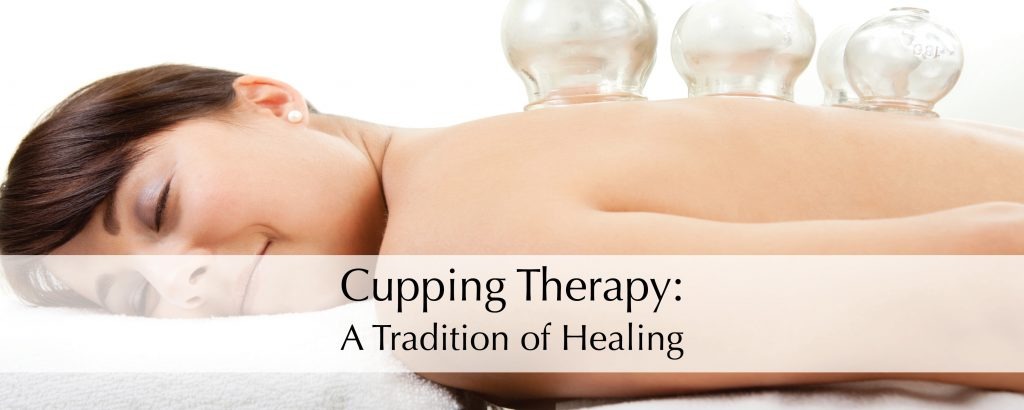

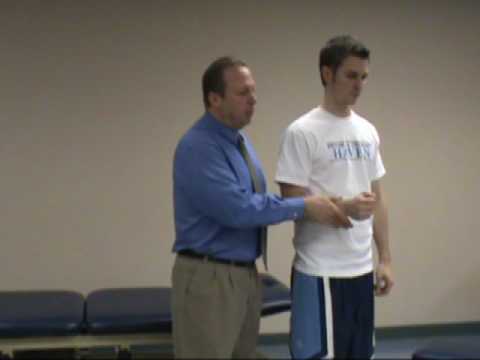
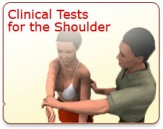

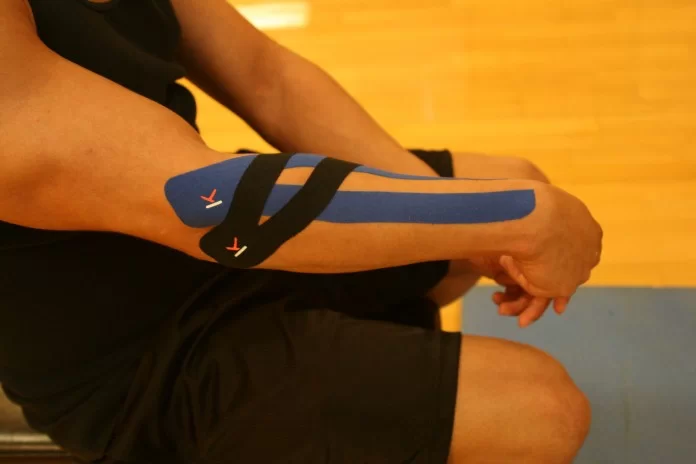
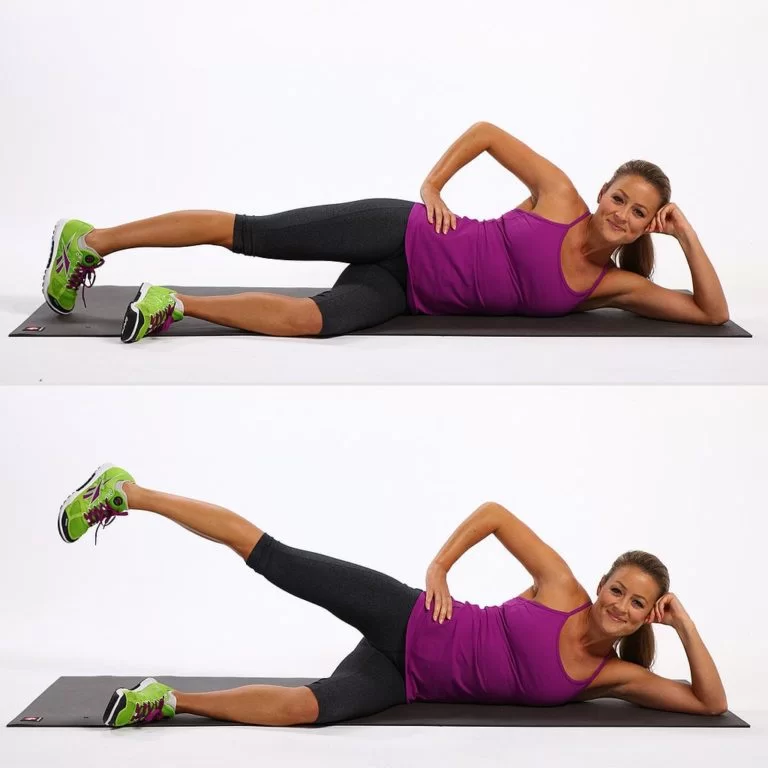
One Comment